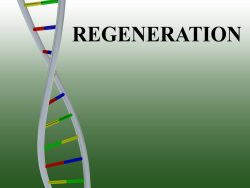 Age is not only a number, but a variety of things that carry unwanted side effects such as weaker muscles, brittle bones, and risks for cancer and cardiovascular disease. Scientists have now shown they can effectively and safely reverse the process of aging in elderly and middle aged mice by partly resetting their cells to more youthful conditions.
Age is not only a number, but a variety of things that carry unwanted side effects such as weaker muscles, brittle bones, and risks for cancer and cardiovascular disease. Scientists have now shown they can effectively and safely reverse the process of aging in elderly and middle aged mice by partly resetting their cells to more youthful conditions.
From addressing diseases that are age related, the approach may also contribute to the biomedical community with a new way of restoring organismal and tissue health. This would happen through improving cell resilience and function in a variety of different disease circumstances such a diseases that are neurodegenerative.
When organisms age, it is not just their health and outward appearances that will change. Every cell body carries a molecular clock that will record the passage of time. Cells isolated from animals or humans have a variety of different chemicals or patterns along their DNA when compared to older animals or humans. Scientists know that by adding a mixture of four reprogramming molecules known as Yamanaka Factors to cells that they have the ability to reset these epigenetic marks back to their original patterns. The approach is how scientists can dial back adult cells into stem cells.
In 2016, the lab showed they used the Yamanaka factors to increase the life span and counter aging signs in mice that had aged prematurely. Recently, the researchers discovered that even in younger mice, the Yamanaka factors may speed up muscle regeneration. In following these first observations, other researchers used the identical pathway to improve functioning of other tissues like the brain, the heart and the optic nerve.
With the new study, the team tested a variety of the cellular rejuvenation approach in animals that were health as they aged. One group received the standard dose of the Yamanaka factors beginning at 15 months old until they were 22 months old which is about ages 50 to 70 in people. A second group were treated from the age of 12 to 22 months of age which is about 35 to 70 in people. The third group was treated at age 25 months for only one month which is about the same age of 80 in people.
The team wanted to establish that the use of this approach for a longer span of time is safe. They did not see any negative side effects on the body weight, health or behavior of the animals.
When compared to a control group of animals, it was shown there were no neurological or alterations in blood cells to the mice that were given the Yamanaka factors. Also, the team did not find any cancers in the animal groups.
When the team looked at normal signs of aging in the mice that had the treatment, they discovered that the animals in a variety of ways looked like younger mice. In both the skin and kidneys, the epigenetics of the treated mice more closely resembled epigenetic patterns that were seen in the younger mice. If they had an injury, the skin cells of the treated mice were able to proliferate and were less likely to cause a permanent scar. The older mice typically show more scarring and less proliferation of skin cells.
Youthfulness was noted in the animals that received the Yamanaka factors for 7 or 10 months, but not noted in the mice that were treated for only one month. This proposes that the treatment is not just pausing aging, but is also actively turning it back, although more study is needed to differentiate the two.
The team plans on looking at more research to determine how specific genes and molecules are influenced by the treatment for a long period of time of the Yamanaka factors and are also developing newer ways of delivering them. Their goal is to bring function and resilience back to cells that are older so that they are more resistant to injury, stress and disease.
To view the original scientific study click below:
In vivo partial reprogramming alters age-associated molecular changes during physiological aging in mice





